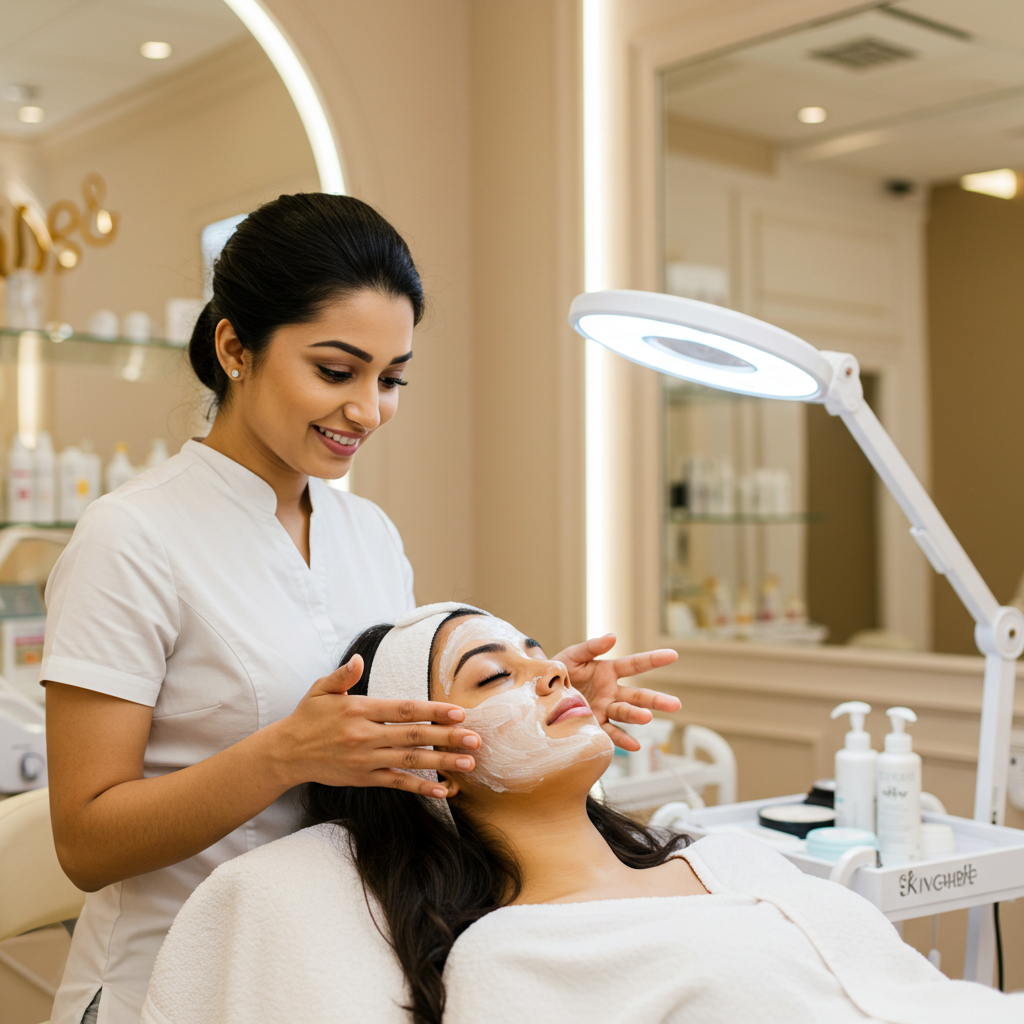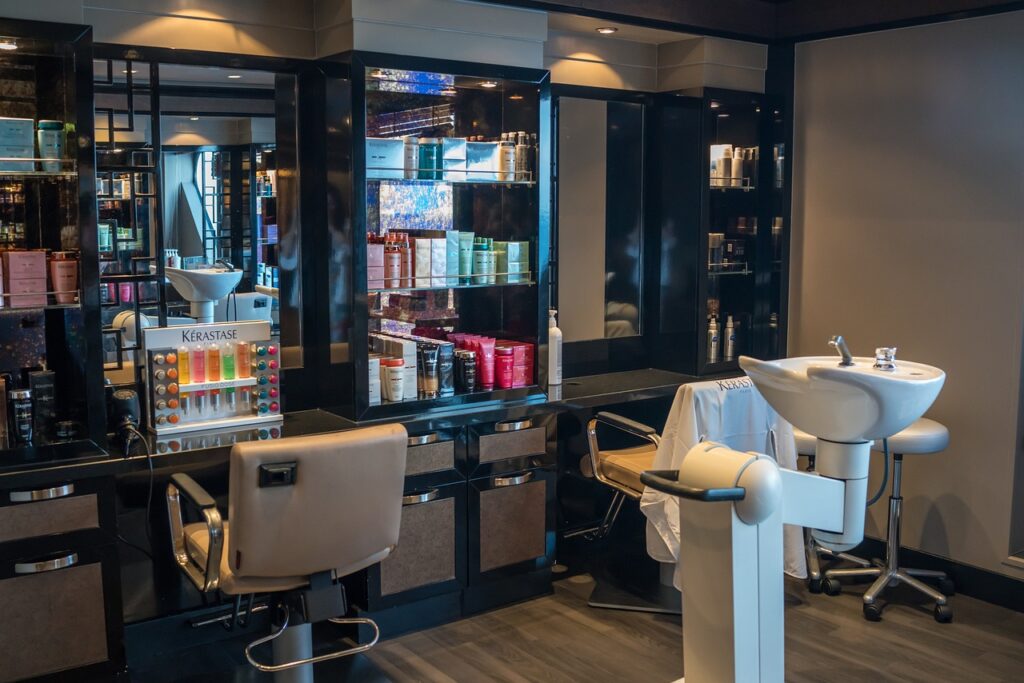In today’s beauty landscape, the significance of skin analysis and tailored treatments cannot be overstated. As clients become increasingly invested in their skincare, understanding their unique skin types and concerns is essential for achieving optimal results. This comprehensive guide will explore the intricacies of skin analysis and the various treatments available in salons, empowering both clients and professionals to enhance their skincare journeys.
Understanding Skin Analysis
Skin analysis is a fundamental step in any professional skincare treatment. It involves a meticulous examination of the skin to identify its type, condition, and specific concerns. This process is vital for estheticians to deliver personalized recommendations and treatments that cater to individual needs.
The Importance of Skin Analysis
- Identifying Skin Type: Understanding whether the skin is dry, oily, sensitive, or combination is crucial for selecting suitable products and treatments.
- Assessing Skin Condition: Evaluating the overall health, hydration levels, and texture of the skin provides insights into underlying issues.
- Recognizing Specific Concerns: Identifying issues such as acne, pigmentation, or signs of aging allows for targeted treatment plans.
- Tailoring Recommendations: A thorough skin analysis enables professionals to customize their approach, ensuring clients receive the best possible care.
The Four Primary Skin Types
Estheticians categorize skin into four primary types: dry, oily, sensitive, and combination. Understanding these types is essential for accurate analysis and effective treatment.
1. Dry Skin
Dry skin typically lacks moisture and oil, leading to a dull, flaky appearance. This type may be prone to redness and fine lines. Treatment focuses on hydration and nourishment, utilizing gentle cleansers and rich moisturizers.
2. Oily Skin
Characterized by excess oil production, oily skin often appears shiny and may have enlarged pores. Clients with this skin type are more susceptible to acne and breakouts. Treatments aim to control oil levels and minimize pore size, often employing oil-free products.
3. Sensitive Skin
Sensitive skin is easily irritated and prone to redness, itching, and inflammation. It may react negatively to certain products or environmental factors. Treatment emphasizes calming and soothing the skin, often using fragrance-free and hypoallergenic products.
4. Combination Skin
Combination skin exhibits traits of both dry and oily skin, with the T-zone (forehead, nose, and chin) often being oilier than the cheeks. Treatment involves balancing products that cater to the different needs of each area.
Steps for Effective Skin Analysis
Conducting an effective skin analysis requires a systematic approach. Below are the key steps involved in this critical process.
Step 1: Client Consultation
The initial stage of skin analysis involves a thorough consultation with the client. This conversation should cover:
- Skincare Routine: Understanding the client’s current products and practices helps assess their impact.
- Lifestyle Factors: Factors such as diet, stress levels, and environmental exposure can significantly affect skin health.
- Specific Concerns: Clients should be encouraged to voice any particular issues they wish to address.
Step 2: Visual Examination
The visual examination is the first physical assessment of the skin. Estheticians should observe the skin’s overall appearance, texture, and any visible concerns. Key aspects to note include:
- Skin tone and color
- Texture and surface irregularities
- Redness or inflammation
- Oiliness or shine
Step 3: Tactile Examination
In this phase, the esthetician gently touches the skin to assess its texture, moisture levels, and elasticity. This hands-on approach provides valuable information about the skin’s condition.
Step 4: Magnifying Examination
Using tools such as a magnifying lamp, estheticians can inspect the skin more closely. This examination helps identify issues like dehydration, hyperpigmentation, and acne.
Step 5: Analysis and Recommendations
After completing the examinations, estheticians analyze the gathered information to formulate an accurate assessment. This analysis informs product recommendations and treatment plans tailored to the client’s specific needs.
Advanced Skin Analysis Techniques
With advancements in technology, skin analysis has evolved to include sophisticated tools that provide deeper insights into skin health.
High-Tech Skin Analyzers
These devices utilize imaging technology to assess various skin parameters, including moisture levels, oiliness, and elasticity. The data collected helps professionals make informed decisions regarding treatments and products.
Face Mapping
Face mapping is a technique that correlates specific skin issues with different areas of the face. This method allows estheticians to identify underlying health concerns and tailor treatments accordingly.
Popular Treatments in Salons
Once the skin analysis is complete, estheticians can recommend a variety of treatments based on the client’s specific needs. Below are some popular treatment options available in salons.
1. Facials
Facials are one of the most sought-after treatments for immediate results. They typically include cleansing, exfoliation, extraction, and hydration. Different types of facials cater to various skin concerns, such as anti-aging, hydration, or acne treatment.
2. Chemical Peels
Chemical peels involve the application of a solution to remove dead skin cells and promote cell turnover. This treatment can effectively address issues like hyperpigmentation, fine lines, and acne scars.
3. Microdermabrasion
This non-invasive treatment uses tiny crystals to exfoliate the skin’s surface, improving texture and reducing the appearance of fine lines and age spots. Microdermabrasion is suitable for all skin types.
4. LED Light Therapy
LED light therapy utilizes different wavelengths of light to target specific skin concerns. For example, blue light is effective for acne, while red light promotes collagen production and reduces inflammation.
5. Hydrafacial
Hydrafacial is a multi-step treatment that cleanses, exfoliates, and hydrates the skin using a specialized device. This treatment is customizable and suitable for all skin types.
The Role of Home Care in Skin Health
While professional treatments are essential, maintaining skin health at home is equally important. Estheticians often provide clients with personalized home care regimens based on their skin analysis.
Essential Products for Home Care
- Cleansers: Choosing the right cleanser for the skin type is crucial for effective daily cleansing.
- Moisturizers: Hydration is key for all skin types, and selecting a suitable moisturizer can help maintain moisture levels.
- Sunscreen: Daily sun protection is vital for preventing sun damage and premature aging.
- Targeted Treatments: Products such as serums and spot treatments can address specific concerns like acne or pigmentation.
Importance of Regular Skin Assessments
Regular skin assessments are essential for monitoring changes and ensuring that treatment plans remain effective. Many salons offer complimentary skin analysis sessions every few months, allowing clients to track their progress and make necessary adjustments.
Benefits of Regular Assessments
- Early Detection: Regular assessments can identify emerging skin issues before they become significant problems.
- Tailored Adjustments: As skin conditions change, treatment plans can be modified to remain effective.
- Client Education: Frequent assessments provide opportunities for estheticians to educate clients about their skin and proper care.



